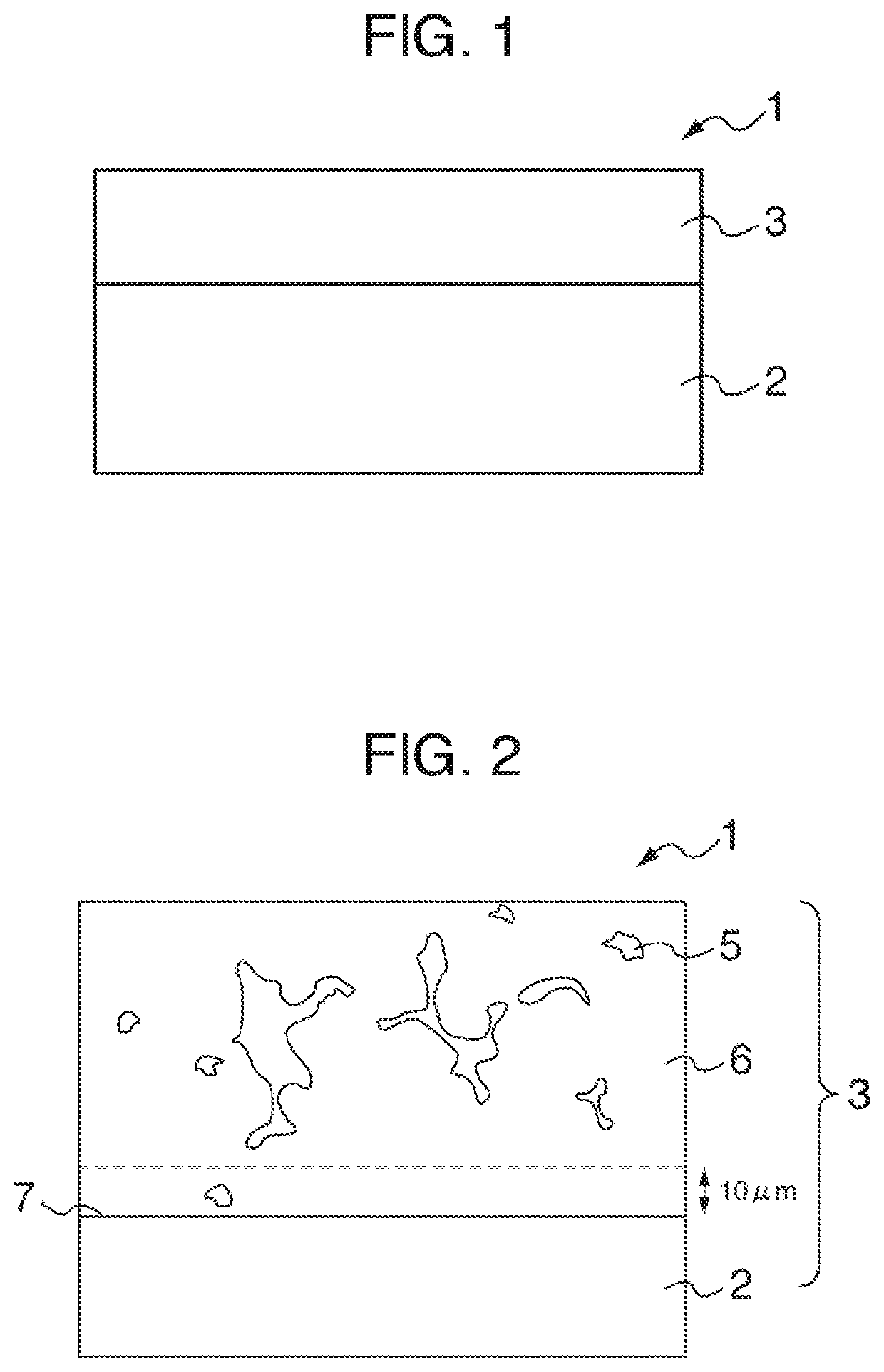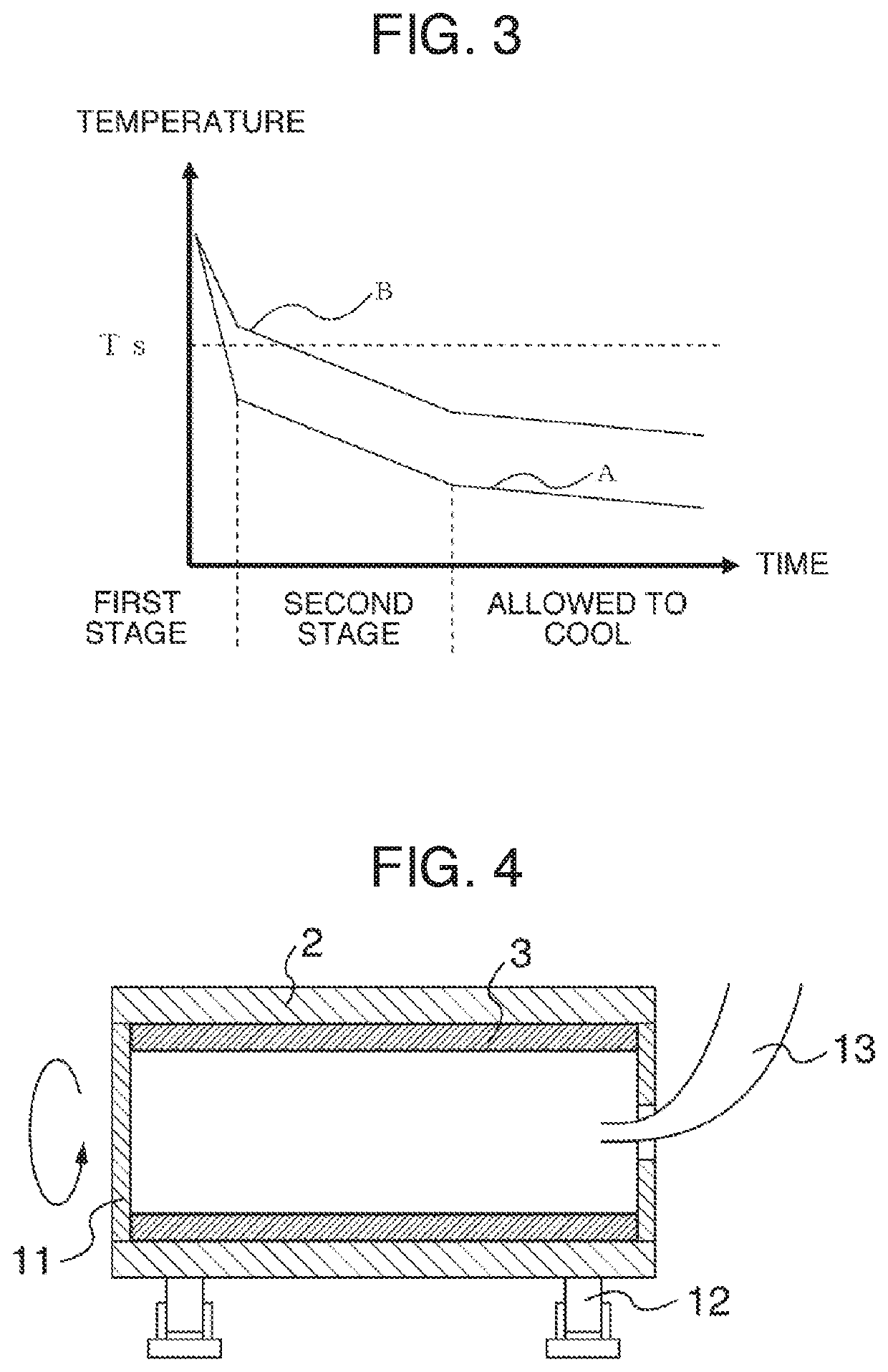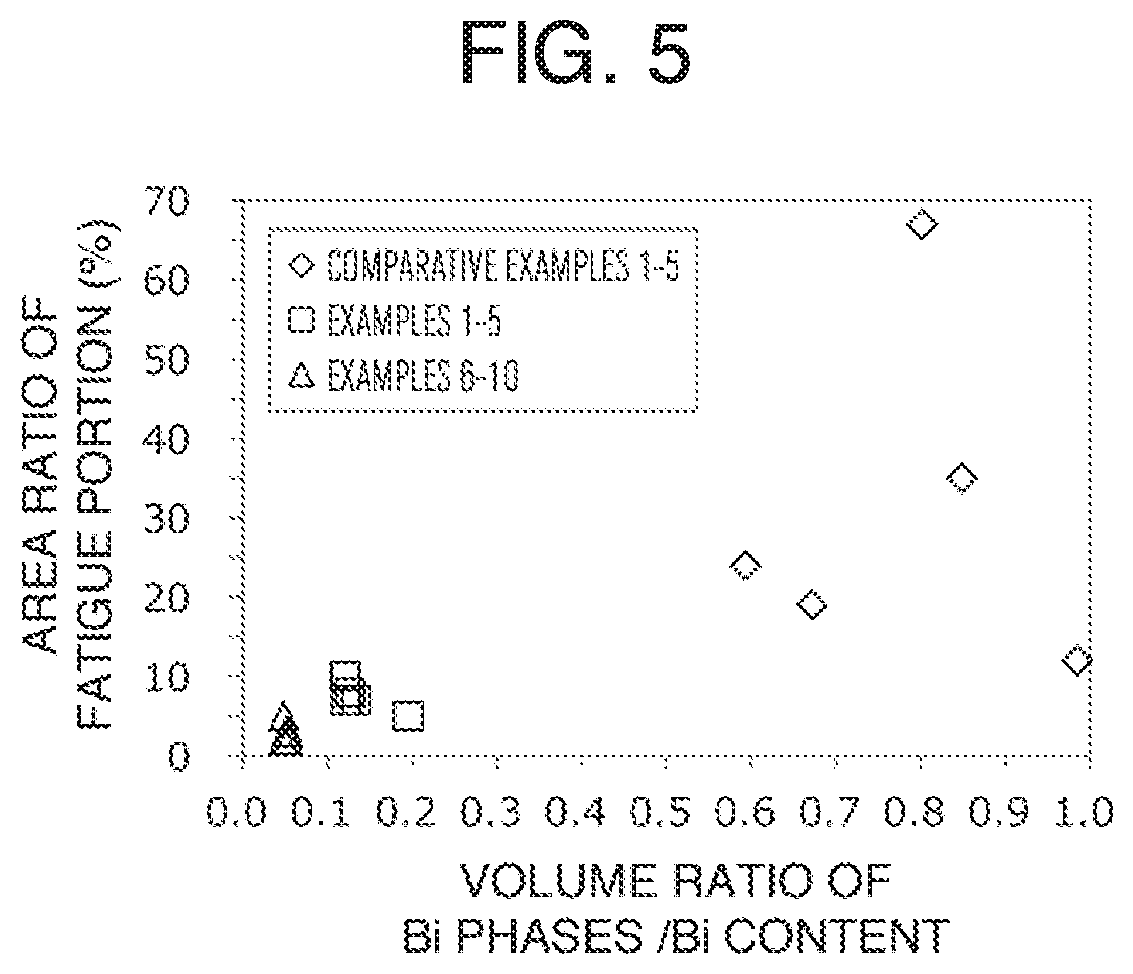Slide member and method for manufacturing same
a technology of sliding member and manufacturing method, which is applied in the direction of engine components, mechanical apparatus, cylinders, etc., can solve the problems of fatigue crack generation, difficulty in removal, and low strength of the region in the vicinity of the bonding interface where the bi phases are accumulated, and achieves the effect of small strength, low strength, and low strength of the region in the vicinity of the bonding interfa
- Summary
- Abstract
- Description
- Claims
- Application Information
AI Technical Summary
Benefits of technology
Problems solved by technology
Method used
Image
Examples
examples
[0067]Samples of Examples 1 to 19 and Comparative Examples 1 to 5 below were produced, and a volume ratio of Bi phases in a region in the vicinity of the bonding interface and its influence on a fatigue property for each sample were evaluated.
Preparation of Substrate
[0068]A SPCC steel plate was used as a substrate. A center portion of an upper surface of the steel plate was cut off while a periphery of the steel plate was left in order to prevent leakage of a molten alloy. Thus, the steel plate was processed into a box shape having a weir formed at the periphery. A casting thickness was set to 5 mm A portion to be a substrate of a sliding member had a thickness of 6 mm A surface of the substrate was covered with molten borax as an antioxidant, and the substrate was preheated at 1000° C. to 1200° C. in a reducing gas atmosphere including H2 gas.
[0069]As a copper alloy, materials including pure copper, pure Bi, and optionally other components were prepared so as...
PUM
| Property | Measurement | Unit |
|---|---|---|
| particle size | aaaaa | aaaaa |
| mass ratio | aaaaa | aaaaa |
| particle area | aaaaa | aaaaa |
Abstract
Description
Claims
Application Information
 Login to View More
Login to View More - R&D
- Intellectual Property
- Life Sciences
- Materials
- Tech Scout
- Unparalleled Data Quality
- Higher Quality Content
- 60% Fewer Hallucinations
Browse by: Latest US Patents, China's latest patents, Technical Efficacy Thesaurus, Application Domain, Technology Topic, Popular Technical Reports.
© 2025 PatSnap. All rights reserved.Legal|Privacy policy|Modern Slavery Act Transparency Statement|Sitemap|About US| Contact US: help@patsnap.com



